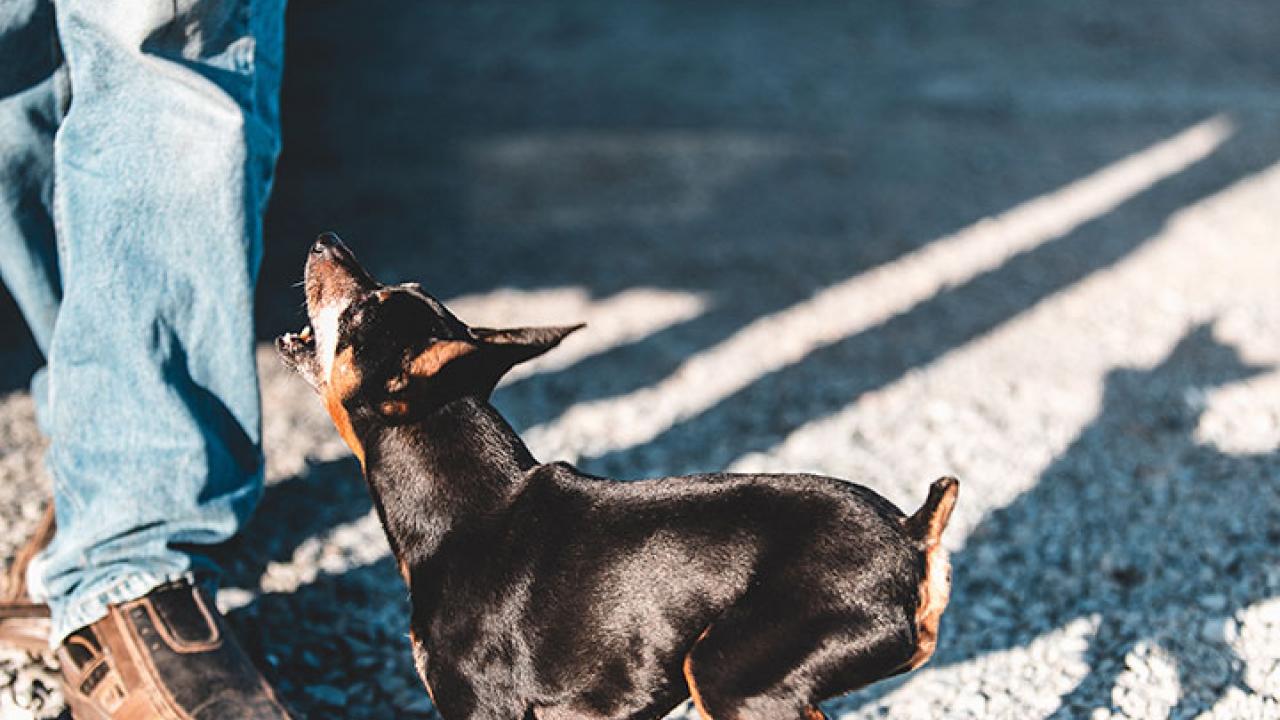
Inappropriate Mounting
Inappropriate Mounting
How we can help
Call 530-752-1393 to schedule an appointment with the Behavior Service.
Inappropriate mounting behavior (also referred to as "humping") is a common behavioral problem owners encounter with their dogs. This behavior can manifest in the inappropriate mounting of legs, arms, inanimate objects (plush dolls, pillows, etc.) and other animals. Commonly, mounting is thought of as being sexually driven; however there are other differentiating causes depending on whether the dog mounts a human versus another animal. When a dog mounts a human, the impetus is typically stress, anxiety, or attention-seeking behavior. When a dog mounts another animal, it typically is caused by either arousal, anxiety, or play. Intact males and intact, “in-heat” females often display inappropriate mounting, reaffirming the potential role of sex hormones in this behavior. Furthermore, mounting behavior may be observed for several months following spaying or neutering surgery. A lot of puppies will exhibit mounting behavior, and it is simply a way for them to play. Mounting behavior is commonly attributed to dominance issues, but in reality this is very rarely the cause.
Causes of Inappropriate Mounting
Hormonal:
- Intact (not spayed or neutered) dogs, including those that are cryptorchid, where one testicle remains in the abdomen and doesn’t descend.
- Rare causes include retained ovaries after spaying and tumors.
Other medical issues:
- Urinary tract infection
- Urinary incontinence
- Skin allergies or anything else causing itchiness (flea infestation, etc)
- Problems that can result from inappropriate mounting include paraphimosis (inability of the penis to retract into the sheath), abrasions, bites to the dog (if the object of the mounting disapproves) or people (if people physically try to stop the mounting).
Behavioral:
- Response to stress or excitement
- Sexual/masturbation
- Play behavior
- Dominance (rare)
- Obsessive or other repetitive behaviors (rare)
Treatment
- Seek veterinary help
- Visit your regular veterinarian first so you can determine if a medical issue is the cause. If the cause is not medical, your veterinarian will help you determine the underlying problem. Sometimes either journaling or filming your dog performing the behavior and bringing this information to your veterinarian can help him or her determine the reason for your dog’s mounting behavior.
- Identify the motivation for the mounting behavior (stress, anxiety, attention-seeking, sexual behavior). Each require different forms of treatment. For example, if the cause of mounting is due to over-excitement, regular exercise may help relax your dog. By addressing the underlying behavior, often anxiety and stress, you will decrease the mounting.
- Practice avoidance
- When your pet starts the behavior, leave the immediate environment. This helps to prevent any encouragement and praise.
- Teach or use different commands to distract the dog during the behavior.
- Make sure your dog can sit, leave it, down, off so when he/she starts inappropriately mounting, you can use these commands. When you do reward him, make sure it is for the command that he followed, and not for the mounting behavior.
- Medications
- Medications are sometimes used to decrease the underlying anxiety and stress. Please talk with your veterinarian specifically about your options.
Things not to do:
- Positively reward the behavior
- Including giving any type of praise or reward while your dog is mounting,
- Punish the dog
- Kicking, kneeing, punching, slapping, and other forms of direct punishment, as this can cause more problems.
In conclusion, the causes of mounting are many. The best first step is to take your dog to your veterinarian to determine the cause for the mounting. It can also help to keep a journal to document the circumstances of your dog’s behavioral changes. This will allow you and your veterinarian to work together in determining how to help your dog.
*This article may not be reproduced without the written consent of the UC Davis School of Veterinary Medicine.
